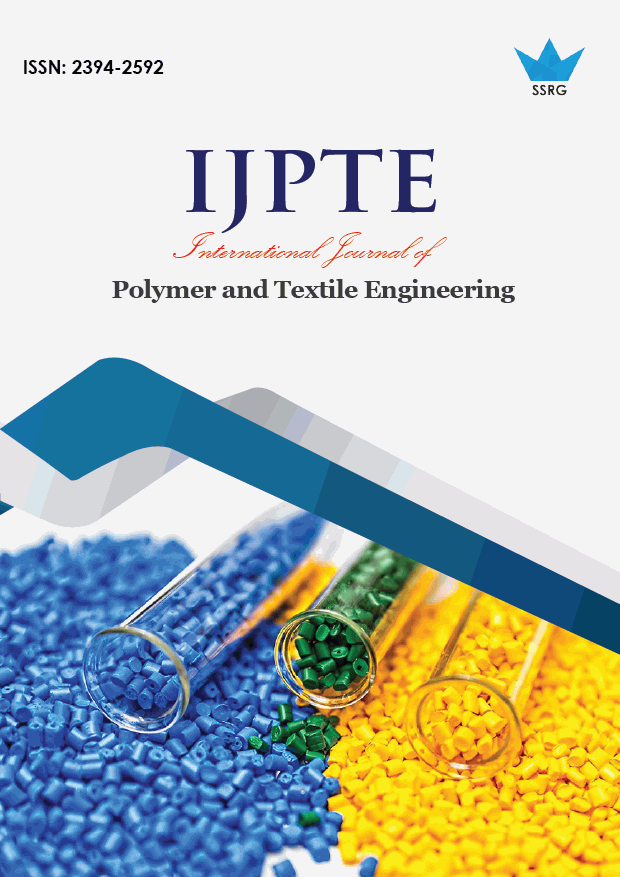Comparison of the Image Processing and Optical Method in the Calculation of Weft Yarn Wavelength from Woven Fabric Appearance

| International Journal of Polymer and Textile Engineering |
| © 2015 by SSRG - IJPTE Journal |
| Volume 2 Issue 2 |
| Year of Publication : 2015 |
| Authors : Meysam Moezzi |
How to Cite?
Meysam Moezzi, "Comparison of the Image Processing and Optical Method in the Calculation of Weft Yarn Wavelength from Woven Fabric Appearance," SSRG International Journal of Polymer and Textile Engineering, vol. 2, no. 2, pp. 6-9, 2015. Crossref, https://doi.org/10.14445/23942592/IJPTE-V2I4P102
Abstract:
Yarn irregularity and its effects on the appearance of fabric are among the most important subjects in textile research. The defects of yarn are often periodic. Therefore, they can be detected by the image processing method. It is usual to determine the wavelengths of these defects by the optical method, but it cannot be creditable because of eye-tiredness, low speed, low attention and the operator’s bear. The main aim of this research was to analyze and compare the two methods, the optical and the image processing methods, in the detection of these defects. In the experimental stage, ten different types of faulty yams were prepared through the dying process. For practical examination, the yarns were used as the weft in a shuttle loom machine and ten types of fabrics were produced. Wavelengths of the weft yarns were calculated by optical and image processing methods. Finally, the results obtained by the two methods were compared. The results of statistical comparison showed that the image processing method was more exact than the optical method, and the calculation of wavelength in this method was closer to the real wavelength.
Keywords:
image processing method, optical method, periodic yarn irregularity, statistical analysis.
References:
[1] H. Catling, “Some effects of sinusoidal periodic yarn thickness variations on the appearance of woven cloth,” Journal of Textile Institute, vol. 49, T234-T246, 1958.
[2] Meishin-cho, Amagasaki-shi, Hyogo-kcn, Basic and practice of the evenness testing, pp. 66-69, Japan: Keisokki Kogyo Co., Ltd., 1986.
[3] R. Furter, Evenness testing in yarn production: Part I. Manchester: The Textile Institute, 1982.
[4] M. Ghane, S. A. Hosseini Ravandi, and M. Moezzi, “Evaluation of diamond bar patterns on fabric surface using an image analysis technique,” Journal of the Textile Institute, vol. 101, pp. 2–7, 2010.
[5] R. Foster, “Weaving investigations - periodic patterning in fabrics,” Journal of Textile Institute, vol.43, P742-P754, 1952.
[6] R.C. Gonzalez and P. Wintz, Digital image processing, Reading, MA: Addison-Wesley Publishing Company, 1987.
[7] Matlab Image Processing Tool box, Users Guide, Version 2, Mathworks, USA, 2005
[8] D. C. Montogomery, Design and analysis of experiments, 7th ed.,. Hoboken, NJ: John Wiley, 2008.
[9] D. C. Montogomery, Introduction of linear regression analysis, 5th ed., Hoboken, NJ: Wiley, 2012.

 10.14445/23942592/IJPTE-V2I4P102
10.14445/23942592/IJPTE-V2I4P102